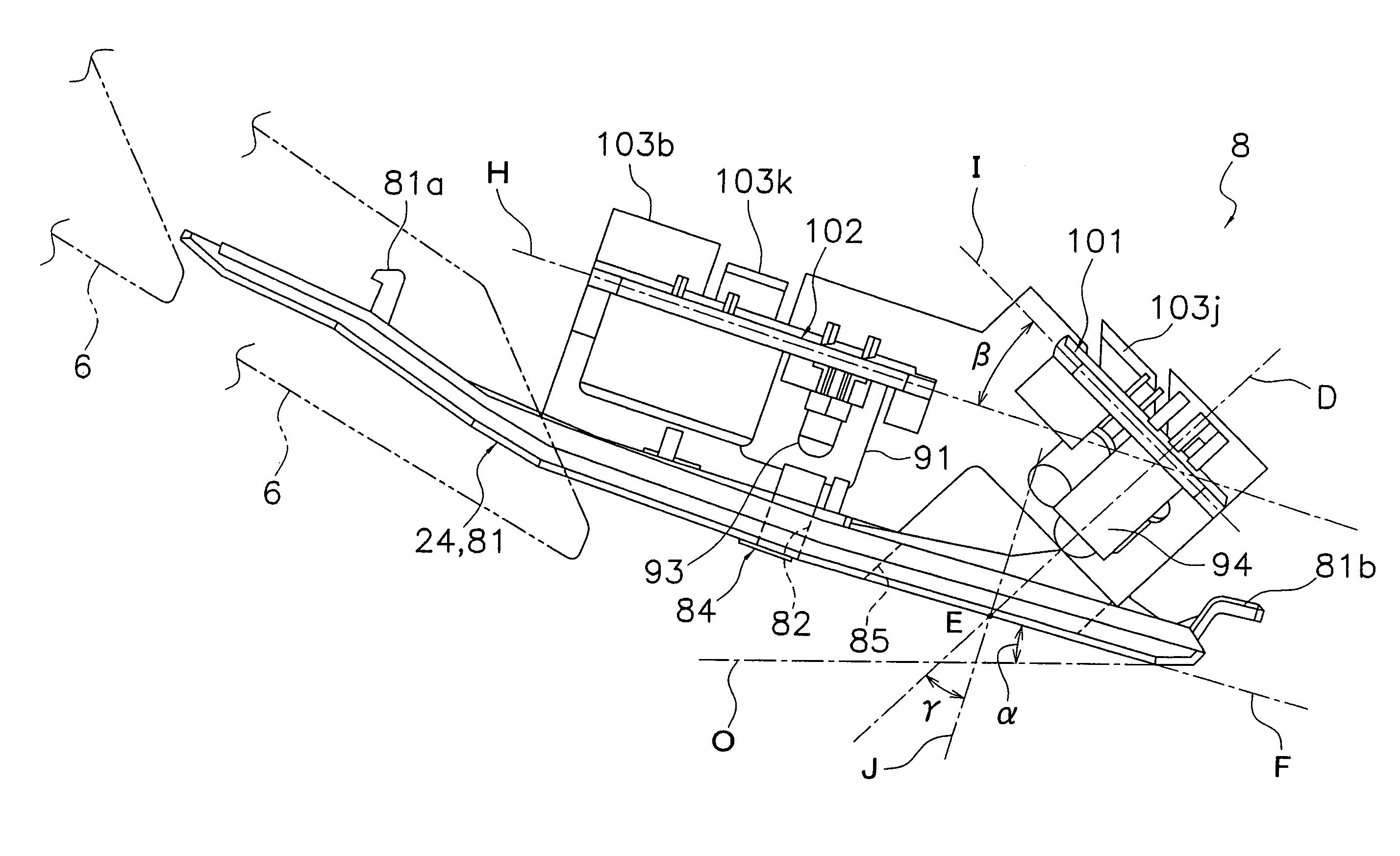Indoor unit of air conditioner
a technology for indoor units and air conditioners, which is applied in the field of indoor units of air conditioners, can solve the problems of limiting the layout space, and restricting the arrangement of indicating devices, so as to reduce the layout space of operating devices and indicating devices
- Summary
- Abstract
- Description
- Claims
- Application Information
AI Technical Summary
Benefits of technology
Problems solved by technology
Method used
Image
Examples
Embodiment Construction
[0037]An embodiment of an indoor unit of an air conditioner according to the present invention is described below with reference to the drawings.
(1) STRUCTURE OF THE INDOOR UNIT OF AIR CONDITIONER
[0038]FIG. 1, FIG. 2, and FIG. 3 show an external view of an indoor unit 1 of an air conditioner according to an embodiment of the present invention. Note that in the description below, when direction and position for the indoor unit 1 are indicated, related terms are used with a state in which the indoor unit 1 is attached to a wall of a room as a reference. In addition, a side of the indoor unit 1 attached to the wall is regarded as a rear side of the indoor unit 1 (i.e., a casing 2), a side opposing the rear side and projecting into the room is regarded as a front side (or the front), lateral sides of the front side and the rear side are regarded as lateral sides (more specifically, a right side viewed from the front is regarded as a right lateral side, and a left side viewed from the fr...
PUM
 Login to View More
Login to View More Abstract
Description
Claims
Application Information
 Login to View More
Login to View More - R&D
- Intellectual Property
- Life Sciences
- Materials
- Tech Scout
- Unparalleled Data Quality
- Higher Quality Content
- 60% Fewer Hallucinations
Browse by: Latest US Patents, China's latest patents, Technical Efficacy Thesaurus, Application Domain, Technology Topic, Popular Technical Reports.
© 2025 PatSnap. All rights reserved.Legal|Privacy policy|Modern Slavery Act Transparency Statement|Sitemap|About US| Contact US: help@patsnap.com



